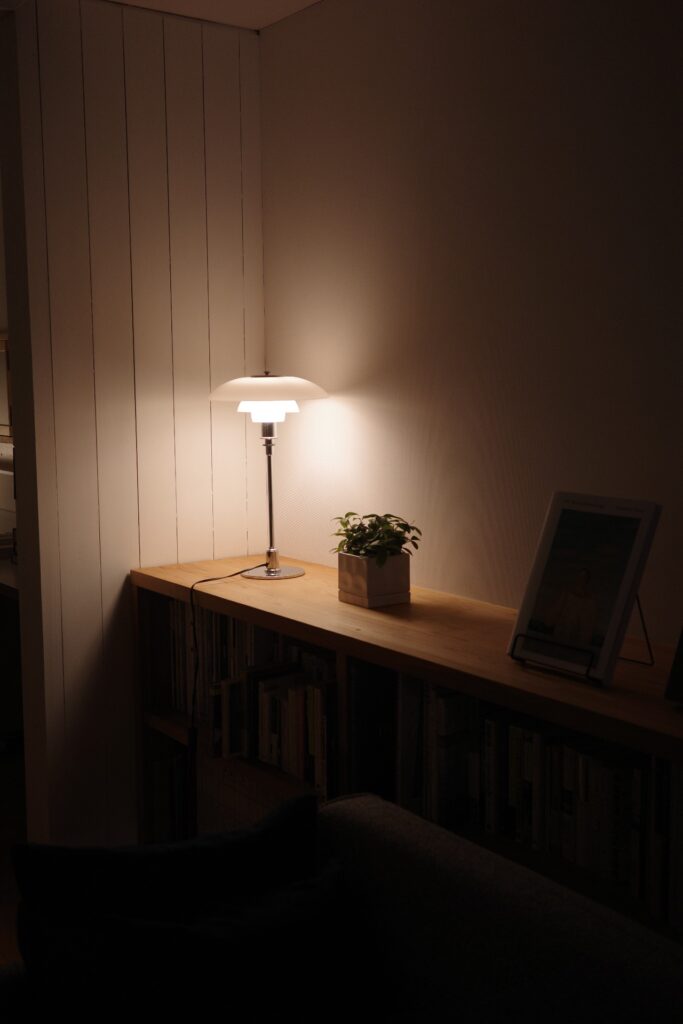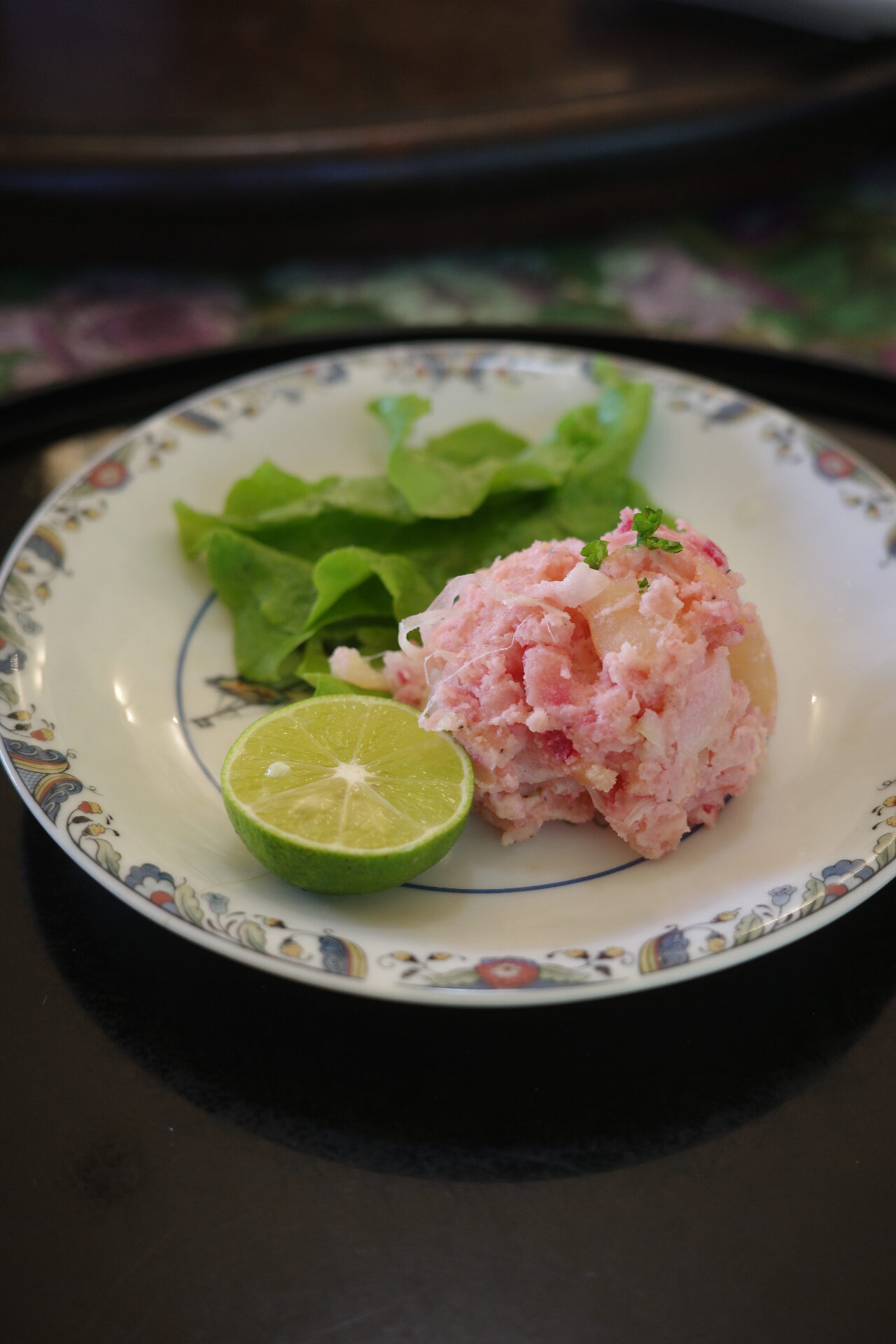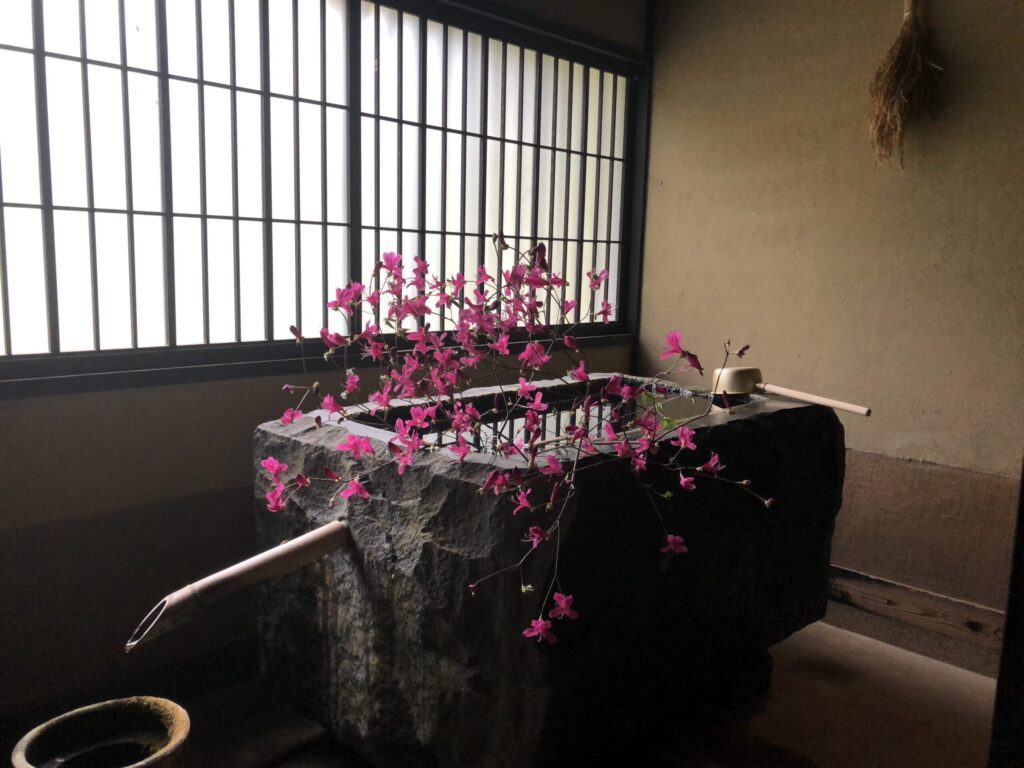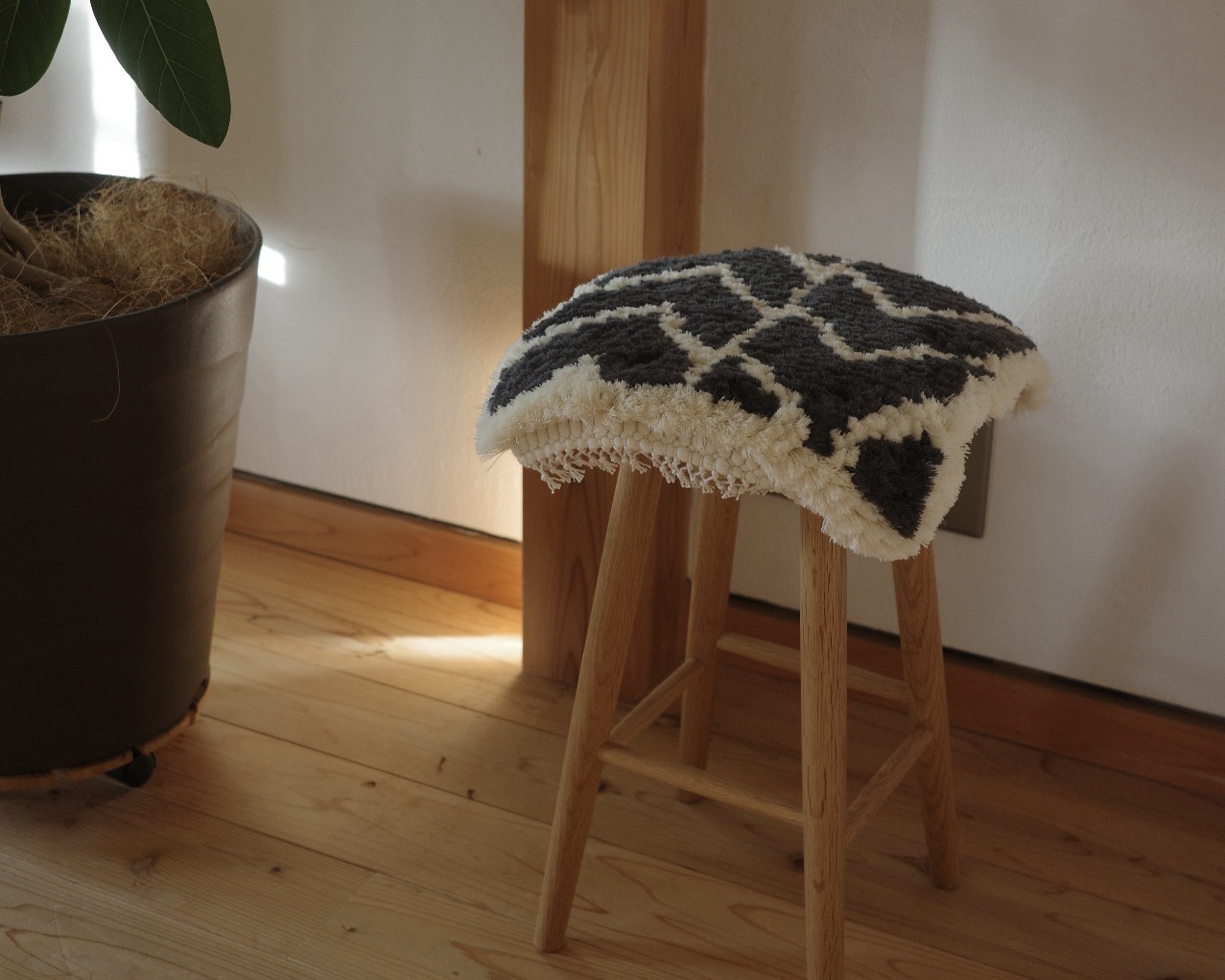
Warmth of handwork and refined design
I came across Yuka Wakamatsu’s chair rugs through a post by someone I follow on Instagram who has a wonderful interior design style. I fell in love with the warmth of her handmade work, which has the feel of folk art, but at the same time has a sophisticated pattern and coloring reminiscent of Scandinavian design, and wanted to incorporate it into my daily life someday. I wanted to incorporate it into my life someday. I thought it would go well with Scandinavian furniture, look simple in a room, and yet not have too much of a presence. I liked the way it was balanced.
About Yuka Wakamatsu
Ms. Wakamatsu studied Kurashiki knotting at the Kurashiki Honzome Hand Weaving Institute in Kurashiki City, Okayama Prefecture. She then moved to Nagoya, where she has been working since then.
About Kurashiki Honzome Hand Weaving Institute
Kurashiki has the second Mingeikan (Folk Art Museum), after Tokyo. The first director was Kichinosuke Tonomura, a dyer and hand weaver. The Kurashiki Honzome Hand Weaving Institute was established by Kichinosuke Tonomura in 1953. It is a place like a school, so to speak, where notions are handed down to future generations. Students gather from all over Japan to study knotting and weaving for one year, eating and sleeping together.
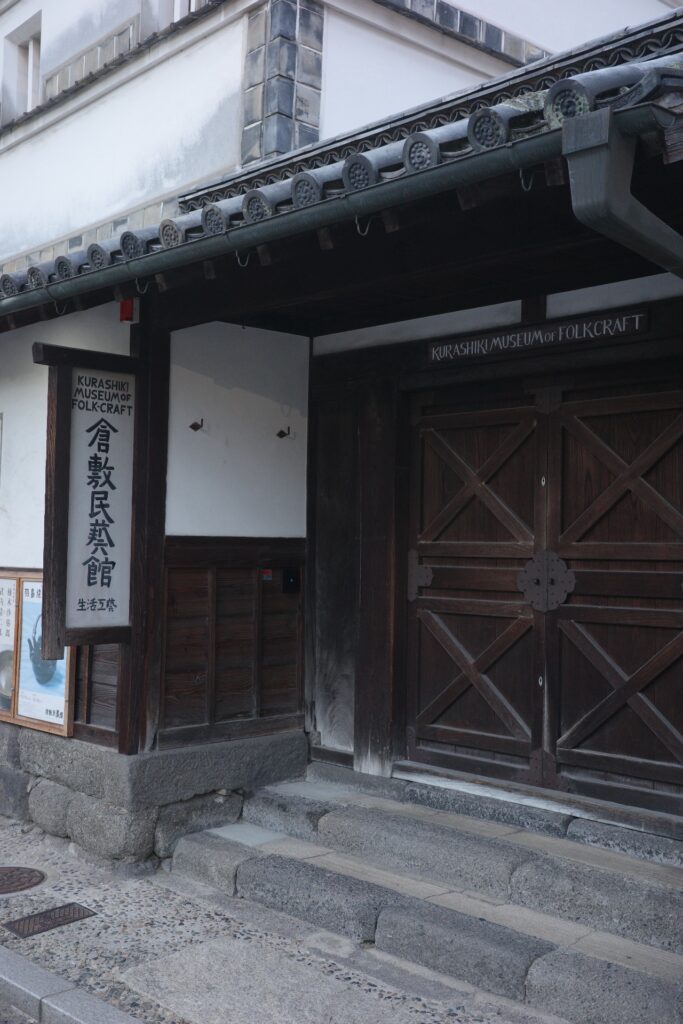
Background of the birth of notting
While people in Japan still mainly sat on tatami mats, the Shirakaba people brought chairs to Japan. Muneyoshi Yanagi and his colleagues traveled to England and brought good chairs with them, and chair making in Japan began. However, wooden chairs were hard and cold, so they needed something to lay on. Therefore, Kichinosuke Tonomura invented a loom for making rugs and designed it so that the rug could be made to fit the size of the chair. Knotting is a rug woven by Japanese artists to fit the chair.
How nottings are made and the thought that goes into them
Knotting was originally made by reusing leftover threads from weaving. The name comes from the English word “knot” meaning a knot. Cotton and wool yarns are wrapped around the warp threads in bundles and cut. Various patterns are created by tying one bunch at a time. Various patterns were invented from the viewpoint of “something that will last for a long time with no waste of thread.
The secret of design that never gets old
Students at the institute wake up at a certain time, work, eat dinner, and work again. Although seemingly monotonous, it is a comfortable rhythm of life. It is just like folding knots carefully one by one. It seems to me that the truth of design, which is born from the accumulation of steady and sincere handwork and which will not become old even if the times change, can be found here.
Designed by Yuka Wakamatsu
There is a traditional folk art pattern consisting of black, red, and white, but when I thought about that pattern coming into my life, I thought it would float away. Select furniture because of its strong coloring.” says Ms.Wakamatsu. (From an interview with Life Designs) Ms. Wakamatsu’s goal is to create patterns that can be used in everyday life without getting boring. Inspiration comes from universal patterns such as plants and animals, and since she is from Nagasaki, she is often inspired by the stained glass windows of churches around the city.
Life with Knotting
There were many patterns that I liked and I had a hard time deciding which one I liked best, but I decided on the dark blue color with white lines. (Cotton/wool, 32 cm square) When I laid it on the chair, it fit in perfectly and was very sturdy, just as Mr. Wakamatsu had intended. When I first held it in my hands, I was surprised at how thick it was. Because of this thickness, even if the seat is hard, it is not hard to sit on it for a long time. Wool is often a concern in the summer, but in fact, it is a material that is cool in summer and warm in winter. In addition, it can be used throughout the year, and if used carefully, it can be used for 20 years or more without problems. I would like to enjoy a life with knotting for 10 or 20 years while laying it on various chairs at home.
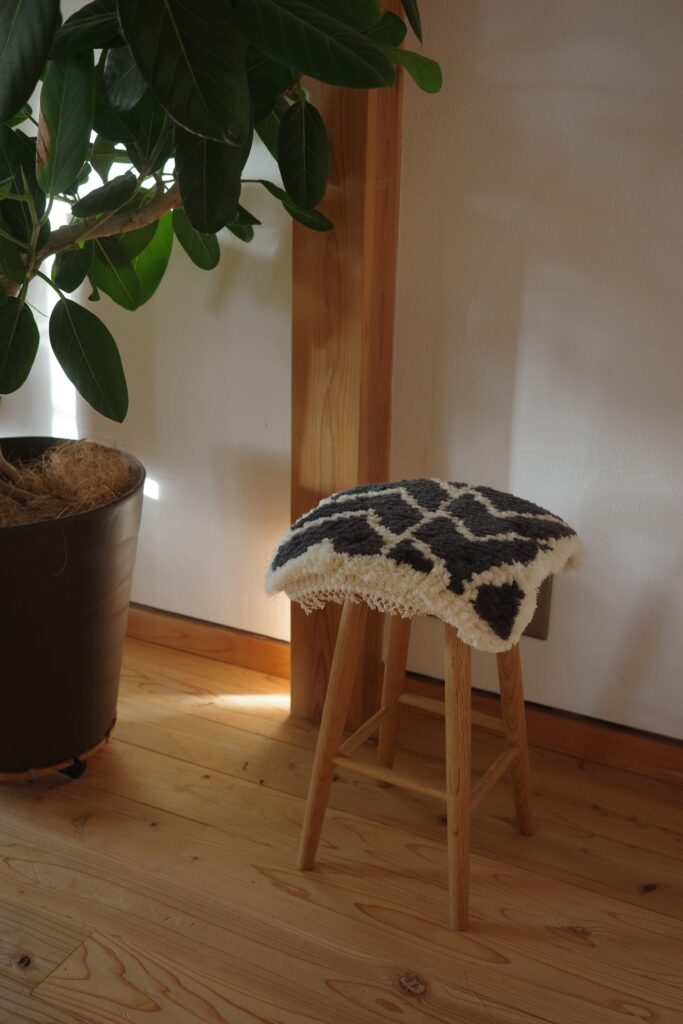

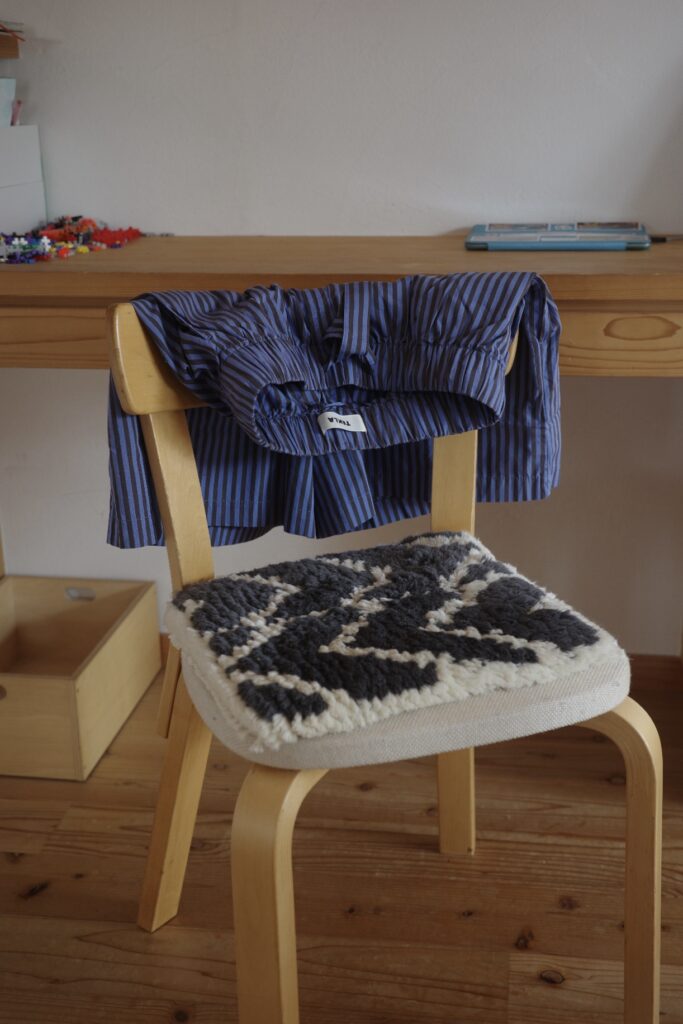
Chair mat by Yuka Wakamatsu
Click here to see Mr. Wakamatsu’s Instagram.
Click here to see Favor’s Instagram.

